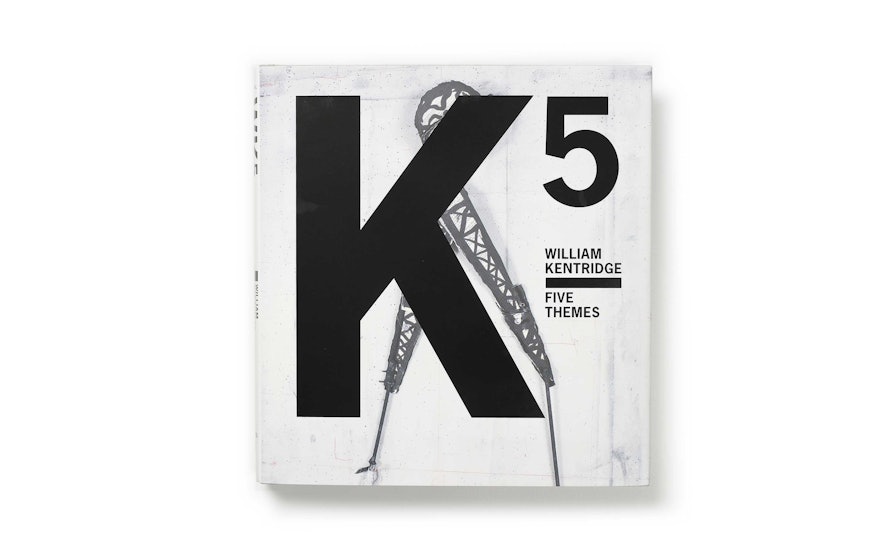In his drawings, prints, sculptures, books, films, installations and performances, the contemporary South African artist William Kentridge creates layered, complex narratives that connect the personal and the political. Pentagram has designed William Kentridge: Five Themes, a book that accompanies a major survey of the artist that debuted at SFMOMA in 2009 and again in 2010 at the Museum of Modern Art in New York. The designers worked with Kentridge to develop different strategies to present this remarkably diverse body of work.
The exhibition William Kentridge: Five Themes presents over 75 works in five major series the artist has completed since the 1980s. Kentridge’s art addresses political and social themes inspired by his native South Africa through narratives of history and fictional characters. One his best-known series focuses on a fictional industrialist named Soho Eckstein and his alter ego Felix Teitlebaum; another is inspired by the South African Truth and Reconciliation Commission hearings of the mid-90s. Newer work has expanded from the context of South Africa to more universal stories. One section of the exhibition, “Sarastro & The Master’s Voice,” is devoted to his stage designs for Mozart’s The Magic Flute, and the newest work in the show focuses on Kentridge’s full-scale opera production for The Nose, premiering at the Metropolitan Opera this year.
In the catalogue each of these sections opens with an image that layers the title of the section over source material from the artist: maps, sketches, assemblages. The designers developed the "WK5" graphic as a way of pulling together the five bodies of work into an iconic oeuvre. In the San Francisco installation, this typography was also used for titling within the exhibition.
Kentridge is perhaps best known for his animated films—the artist calls them “drawings for projection”—in which he films sequences of drawings as they are reworked by hand, frame by frame. The book presents segments from several of these films as progressions of individual frames or stills, with the images consecutively “growing” or getting larger in a cinematic band across the pages and subsequent spreads. This treatment conveys the drawings’ status as stills but also as individual images or artworks, allowing the reader to examine Kentridge’s technique for the duration of the film.
The five sections of the catalogue are separated by essays; among these pages the typography hugs the bottom edge of the page and, like the stills, "grows" upward. The book also includes a “stereo” interview between Kentridge and Michael Auping, chief curator of the Modern Art Museum of Fort Worth. This is presented as a stream of dialogue in which Kentridge has gone back in and rewritten or reworked his own responses in a more conversational voice, with the commentary appearing as highlighted blocks of text inserted into the interview. Included in the back of the book is a DVD that contains footage of Kentridge at work and segments of several films.

